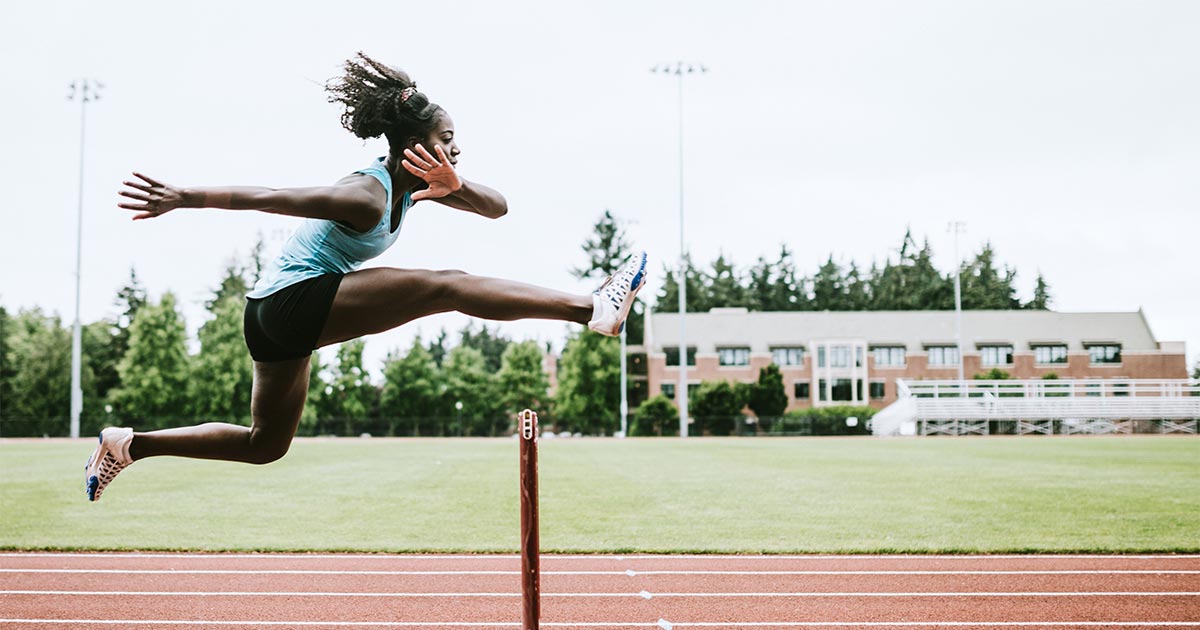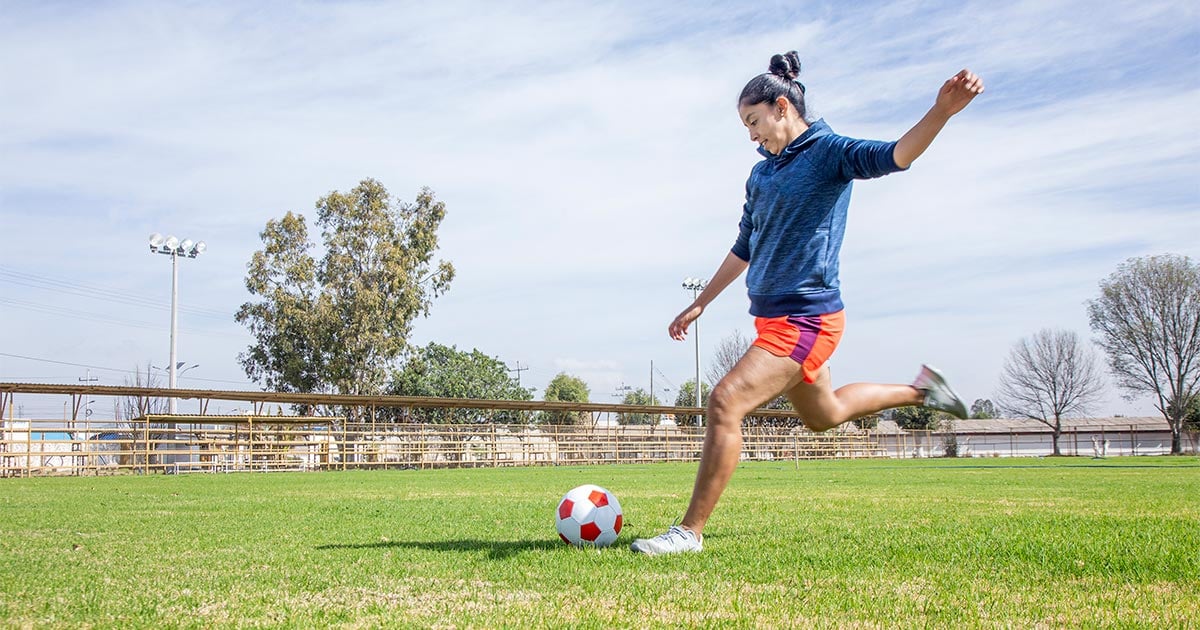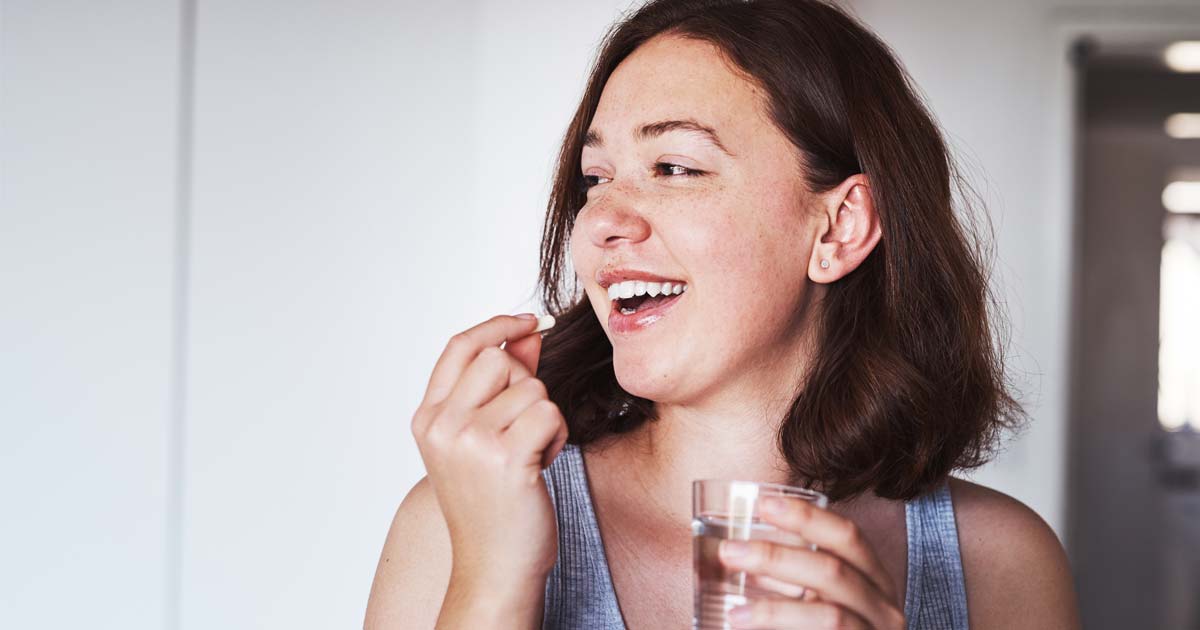
Advice to improve your movement, fitness, and overall health from the #1 in orthopedics in the U.S.
What Female Athletes Should Know about Iron Deficiency
This condition is particularly common in women and can lead to larger health problems.
Advice to improve your movement, fitness, and overall health from the #1 in orthopedics in the U.S.

“Iron deficiency can lead to subtle changes in an athlete’s performance and lower their ability to push through fatigue,” says Marci A. Goolsby, MD, Medical Director of the Women's Sports Medicine Center at HSS. “Lots of other factors can also create these issues, but when an athlete comes to see us with fatigue and performance-related concerns, low iron is one of the first things we check for.”
Why is iron so important?
Iron is a key part of the molecules hemoglobin and myoglobin, which carry oxygen throughout the body and deliver it to the muscles. It’s also important for energy and metabolism.
Iron is stored in many parts of the body, including the liver, bone marrow and muscle. If iron stores become depleted because of inadequate levels in the diet or iron loss, the body’s ability to move oxygen where it needs to go can be greatly reduced.
“When you're low on iron, you're not getting the amount of oxygen that you need,” says Heidi Skolnik, MS, CDN, FACSM, a sports nutritionist in the Women’s Sports Medicine Center at HSS and a fellow with the American College of Sports Medicine. “That's why you become fatigued.”
Why are iron deficiency and anemia more common in female athletes?
Some girls and women are more likely to have low iron levels because of blood loss during menstruation. Those who experience particularly heavy menstrual bleeding are at highest risk. Overall, experts estimate that up to one-quarter of female athletes are iron deficient.
Younger athletes who are still growing may also require higher levels of iron to stay healthy. That’s because during times of growth, the body needs to create more blood. “It becomes a little tougher for your body to keep up with the synthesis of iron,” Skolnik says.
Athletes who are dieting and restricting caloric intake, as well as those who are vegetarian or vegan, may not have enough iron in their diets. Endurance athletes, especially distance runners, are also at increased risk because they are thought to lose iron through microscopic intestinal bleeding as well as tiny broken blood vessels in the soles of their feet.
How do healthcare providers test for iron deficiency and anemia?
Iron deficiency and anemia are not the same thing. Anemia can be viewed as a more severe form of iron deficiency, but it can also have other causes, such as inadequate levels of certain vitamins or related to other medical issues.
Iron deficiency is measured by a blood test that looks for a molecule called ferritin, which is a protein in the blood that contains iron. A normal level of ferritin is between 11 to 307 micrograms per liter for women and 24 to 336 micrograms per liter for men.
Blood tests for anemia look at the quality and volume of red blood cells. The blood tests for anemia are hemoglobin and hematocrit, which are part of a complete blood count.
In addition to fatigue and slow recovery after workouts, iron deficiency and anemia may be responsible for other side effects including reduced immune function, brittle hair and nails, rapid heartbeat, dizziness and shortness of breath.
What’s the best way to increase iron in the blood?
First, it’s important to make sure there are no underlying health issues that are causing your iron levels to be low. Bleeding in the gastrointestinal tract, which may be due to ulcers or cancer, can be a cause of iron deficiency anemia.
If that isn’t the case, changes in your diet are the first thing to try. “When we see that an athlete is iron deficient, the first place we start is by looking at their nutrition,” Dr. Goolsby says. “This is where it’s really important to have a whole team of experts looking at how to best help the patient.”
Foods that are high in iron fall into two categories: those with heme iron and those with nonheme iron. Heme iron comes exclusively from animal products — red meat, poultry and fish. Nonheme iron occurs naturally in some foods, including beans, whole grains and leafy greens. It’s also added to some fortified foods like cereal and pasta. Nonheme iron is harder for the body to absorb, so you need to eat more of it to get the same benefit.
Skolnik points out that combining iron-rich foods with those that are high in vitamin C makes it easier for the body to absorb the iron. On the other hand, substances in tea and coffee can block iron absorption. People trying to get more iron in their diets should avoid drinking these beverages with meals.
Cooking food in a cast-iron pan is another way to add iron to the diet.
Should I consider taking iron supplements?
If you are not able to bring your iron up to healthy levels through diet or taking a multivitamin that contains iron, it’s important to discuss the best type of iron supplement with a healthcare provider who is familiar with your medical history and the results from your blood tests. That’s because supplements can have side effects like constipation, nausea and stomach pain. Taking too much iron can even lead to organ damage.
Overall, iron plays an important role in delivering oxygen to your body and maintaining energy, health and performance. If you are active, and especially if you are in a high-risk group, you should have your iron levels checked annually.
Published 8/16/2021


